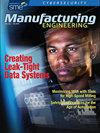Visualization in Operations Management Research
IF 0.1
4区 工程技术
Q4 ENGINEERING, MANUFACTURING
引用次数: 3
Abstract
The unprecedented availability of data, along with the growing variety of software packages to visualize it, presents both opportunities and challenges for operations management (OM) research. OM researchers typically use data to describe conditions, predict phenomena, or make prescriptions depending on whether they are building, testing, or translating theories to practice. Visualization, when used appropriately, can complement, aid, and augment the researcher’s understanding in the different stages of research (theory building, testing, or translating and conveying results). On the other hand, if used incorrectly or without sufficient consideration, visualization can yield misleading and erroneous claims. This article formally examines the benefits of visualization as a complementary method enhancing each stage of a broader OM research strategy by examining frameworks and cases from extant research in different OM contexts. Our discussion offers guidance with regard to researchers’ use of visual data renderings, particularly toward avoiding misrepresentation, which can arise with the incorrect use of visualization. We close with a consideration of emerging trends and their implications for researchers and practitioners as well as recommendations for both authors and reviewers, regardless of domain, in evaluating the effectiveness of visuals at each stage of research.运营管理研究中的可视化
前所未有的数据可用性,以及越来越多的可视化软件包,为运营管理(OM)研究带来了机遇和挑战。OM研究人员通常使用数据来描述条件、预测现象或制定处方,这取决于他们是否正在构建、测试或将理论转化为实践。如果使用得当,可视化可以补充、帮助和增强研究者在研究的不同阶段(理论建立、测试或翻译和传达结果)的理解。另一方面,如果使用不当或没有充分考虑,可视化可能会产生误导和错误的主张。本文通过研究不同OM背景下现有研究的框架和案例,正式研究了可视化作为一种补充方法的好处,增强了更广泛的OM研究策略的每个阶段。我们的讨论为研究人员使用可视化数据效果图提供了指导,特别是在避免误传方面,误传可能因不正确使用可视化而产生。最后,我们考虑了新兴趋势及其对研究人员和从业人员的影响,以及对作者和审稿人的建议,无论在哪个领域,都可以评估视觉效果在每个研究阶段的有效性。
本文章由计算机程序翻译,如有差异,请以英文原文为准。
求助全文
约1分钟内获得全文
求助全文
来源期刊

Manufacturing Engineering
工程技术-工程:制造
自引率
0.00%
发文量
0
审稿时长
6-12 weeks
期刊介绍:
Information not localized
 求助内容:
求助内容: 应助结果提醒方式:
应助结果提醒方式:


